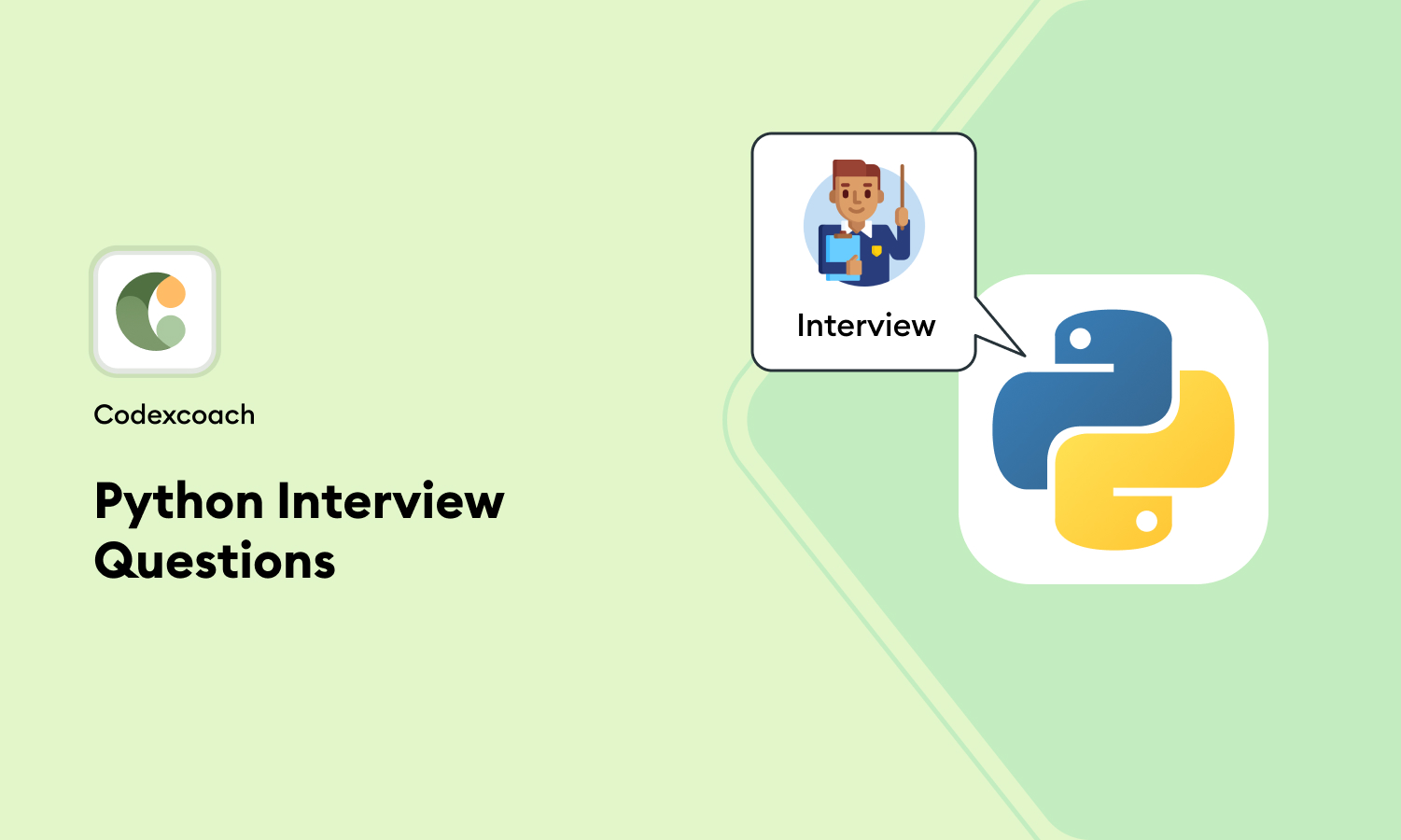Embarking on a Python job interview requires familiarity with its syntax, libraries, and best practices. To help prepare, here are key Python interview questions that explore your understanding of the language’s features, such as data structures, memory management, object-oriented programming, standard libraries, and coding paradigms.
1. What is PEP 8?
PEP 8 is the style guide for Python code. It contains conventions for formatting Python code for maximum readability.
2. How is memory managed in Python?
Python has a private heap space to hold all its data structures. The Python memory manager manages the allocation of this heap space for Python objects. Additionally, Python has a built-in garbage collector to recycle all the unused memory to make it available for the heap space.
3. What are the key features of Python?
Python is an interpreted, object-oriented, high-level programming language with dynamic semantics. Its high-level built-in data structures, combined with dynamic typing and dynamic binding, make it very attractive for Rapid Application Development, as well as for use as a scripting or glue language to connect existing components together.
4. What are decorators in Python?
Decorators in Python are a very powerful and useful tool to modify the behavior of a function or class. They allow you to wrap another function in order to extend the behavior of the wrapped function, without permanently modifying it.
5. What is the difference between a list and a tuple in Python?
Lists are mutable, which means they can be edited and changed. Tuples are immutable; once created, their contents cannot be changed.
6. How does Python manage memory for large data structures?
For large data structures, Python provides special modules like arrays and collections (e.g., deque). Besides, the Python standard library includes the gc module for garbage collection and the sys module to access configuration variables or to manage memory for large objects directly.
7. What is list comprehension and provide an example?
List comprehension offers a shorter syntax when you want to create a new list based on the values of an existing list. Example: [x for x in range(5)] would output [0, 1, 2, 3, 4].
8. What are Python iterators?
Iterators are objects that can be iterated over. In Python, an iterator implements the iterator protocol, which consists of the methods iter() and next().
9. What is the difference between deep copy and copy in Python?
copy creates a new compound object but inserts references into it to the objects found in the original. deepcopy constructs a new compound object and then, recursively, inserts copies into it of the objects found in the original.
10. How can you manage immutable data types in Python?
Immutable data types, such as strings and tuples, can be managed by creating copies when you make changes, using concatenation, slicing, or unpacking to create modified versions of the original data without altering the original objects themselves.
11. What is a lambda function in Python?
A lambda function is a small anonymous function. It can take any number of arguments but can only have one expression. It’s often used for short, throwaway functions.
12. What are Python’s global and local variables?
In Python, a global variable is one that is defined outside of a function and is accessible to all functions within the same module, while a local variable is one that is defined inside a function and is only accessible within that function.
13. How do you handle errors and exceptions in Python?
Errors and exceptions in Python are handled with try-except blocks. A try block is used to test a block of code for errors. The except block is used to handle the error.
14. What is the GIL in Python?
GIL stands for Global Interpreter Lock. It is a mutex that protects access to Python objects, preventing multiple threads from executing Python bytecodes at once. This lock is necessary because CPython’s memory management is not thread-safe.
15. Can you explain the difference between str and repr?
Both str and repr are methods used to represent an object as a string. The str method is meant to return a human-readable representation of the object, while repr is supposed to return an expression that can be evaluated by Python’s interpreter to recreate the object.
16. What are Python modules? Name some commonly used built-in modules in Python.
Python modules are files containing Python code that can define functions, classes, and variables. These modules can then be imported into other Python scripts and programs. Some commonly used built-in modules are math, datetime, os, sys, json, and random.
17. What is a namespace in Python?
A namespace in Python is a system that ensures that all the names in a program are unique and can be used without any conflict. Python implements namespaces as dictionaries with ‘name as key’ mapping to the corresponding ‘object as value’.
18. How can you share global variables across modules in Python?
To share global variables across modules within a single program, you can create a special module (often named config or settings). Import the module, or the specific variables from the module, into other modules to use the global variables.
19. What is the with statement in Python?
The with statement in Python is used for resource management and exception handling. It ensures that resources are properly acquired and released, making the code cleaner and more readable.
20. What are generators in Python?
Generators are a type of iterable, like lists or tuples. Unlike lists, they do not allow indexing with arbitrary indices, but they can be iterated through with for loops. They generate items one at a time and only when required, hence they are more memory efficient than lists.
21. How do you make a Python script executable on Unix?
To make a script executable on Unix, you need to do two things:
- Add a shebang line at the start of the script (e.g.,
#!/usr/bin/env python3). - Modify the script’s file permissions to make it executable (e.g., using the command
chmod +x script.py).
22. What are Python’s classmethod and staticmethod?
Classmethod is a method that receives the class as an implicit first argument. It can be called a class or an instance. staticmethod is a method that does not receive an implicit first argument and is the same as a regular function that belongs to the class’s namespace.
23. What is slicing in Python?
Slicing in Python refers to accessing a range of items from sequence types like lists, tuples, and strings. It’s done by specifying the start and end index, as well as the step (optional), like my_list[1:5:2].
24. Explain the map, filter, and reduce functions in Python.
Mapapplies a given function to each item of an iterable (like a list) and returns a list of the results.Filtercreates a list of elements for which a function returns true.Reduceapplies a rolling computation to sequential pairs of values in a list and returns a single value.
25. What is a virtual environment and why is it used?
A virtual environment is a self-contained directory tree that contains a Python installation for a particular version of Python, plus a number of additional packages. It’s used to create isolated environments for Python projects, ensuring that each project has its own dependencies and package versions.
26. How can you concatenate multiple strings in Python?
You can concatenate strings using the + operator, str.join() method, or formatted string literals (f-strings).
27. What is the difference between x is y and x == y in Python?
x is y evaluates to True if x and y are the exact same object. x == y evaluates to True if the objects referred to by x and y are equal.
28. What is a docstring in Python and how is it used?
A docstring is a string literal that occurs as the first statement in a module, function, class, or method definition. It’s used to document the purpose and usage of the code block that follows it.
29. How can you improve the performance of a Python application?
Performance improvements can be achieved by optimizing algorithms, using efficient data structures, leveraging compiled extensions, and avoiding unnecessary memory allocations. Profiling tools can help identify bottlenecks.
30. Explain the usage of the pass statement in Python.
Pass is a null operation in Python. It is often used as a placeholder indicating where code will eventually go, but where no code is needed at the moment, such as in empty classes or functions.





